Including JavaScript to WordPress enhances your web site with dynamic performance that commonplace options can’t present. Whereas WordPress doesn’t permit direct JavaScript insertion within the content material editor, a number of efficient implementation strategies exist.
This information walks you thru a number of approaches, from beginner-friendly plugins to superior code integration strategies. You’ll be taught sensible steps for including JavaScript to particular pages, posts, or your total web site whereas sustaining efficiency and safety requirements.
Desk of Contents
- Before You Begin: Important Considerations
- Method 1: Using Plugins to Add JavaScript to WordPress
- Method 2: Adding JavaScript Manually to Theme Files
- Method 3: Using WordPress Hooks and Functions.php
- Targeting Specific Pages or Posts with JavaScript
- Optimizing JavaScript Performance in WordPress
- Debugging JavaScript in WordPress
Earlier than You Start: Necessary Concerns
Taking precautions earlier than including JavaScript to your WordPress web site can prevent time and frustration later.
- First, create a complete backup of your website recordsdata and database. This ensures you possibly can restore all the things if one thing goes flawed throughout implementation.
- When including JavaScript on to theme recordsdata, all the time use a child theme as a substitute of modifying the mother or father theme straight. For steerage, take a look at our full tutorial on creating a WordPress child theme.
- JavaScript impacts web page loading pace, so efficiency ought to be thought-about when including scripts. Wherever doable, place non-essential code within the footer fairly than the header.
- Check your adjustments in a staging environment earlier than making use of them to your stay web site. Many internet hosting suppliers supply staging instruments that create a personal copy of your web site for testing.
- Lastly, solely use JavaScript from trusted sources to maintain your site’s security and stability.
Methodology 1: Utilizing Plugins to Add JavaScript to WordPress
Plugins supply probably the most simple strategy to including JavaScript to WordPress for newbies and people uncomfortable with code enhancing. They supply user-friendly interfaces whereas dealing with the technical features behind the scenes.
A number of wonderful choices exist for managing JavaScript in WordPress:
- WPCode: This fashionable plugin helps you to add code snippets to your web site’s header, physique, or footer with out enhancing theme recordsdata, with extra options for conditional loading.
- Simple Custom CSS and JS: This device focuses on including {custom} CSS and JavaScript to WordPress websites with choices for inside or exterior file loading.
- Code Snippets: A flexible plugin for including varied code varieties, together with JavaScript, to your WordPress web site with snippet group and export/import capabilities.
- Head & Footer Code: A light-weight, no-frills choice for customers who want simply the fundamental performance of including scripts to move and footer areas.
- Insert Headers And Footers: Good for absolute newbies with its minimalist interface and useful inline documentation to information first-time customers.
Including JavaScript with WPCode: Step-by-Step
Let’s stroll by the method utilizing WPCode for instance:
1. Set up and activate the WPCode plugin by your WordPress dashboard.
Plugins > Add New > seek for “WPCode“.
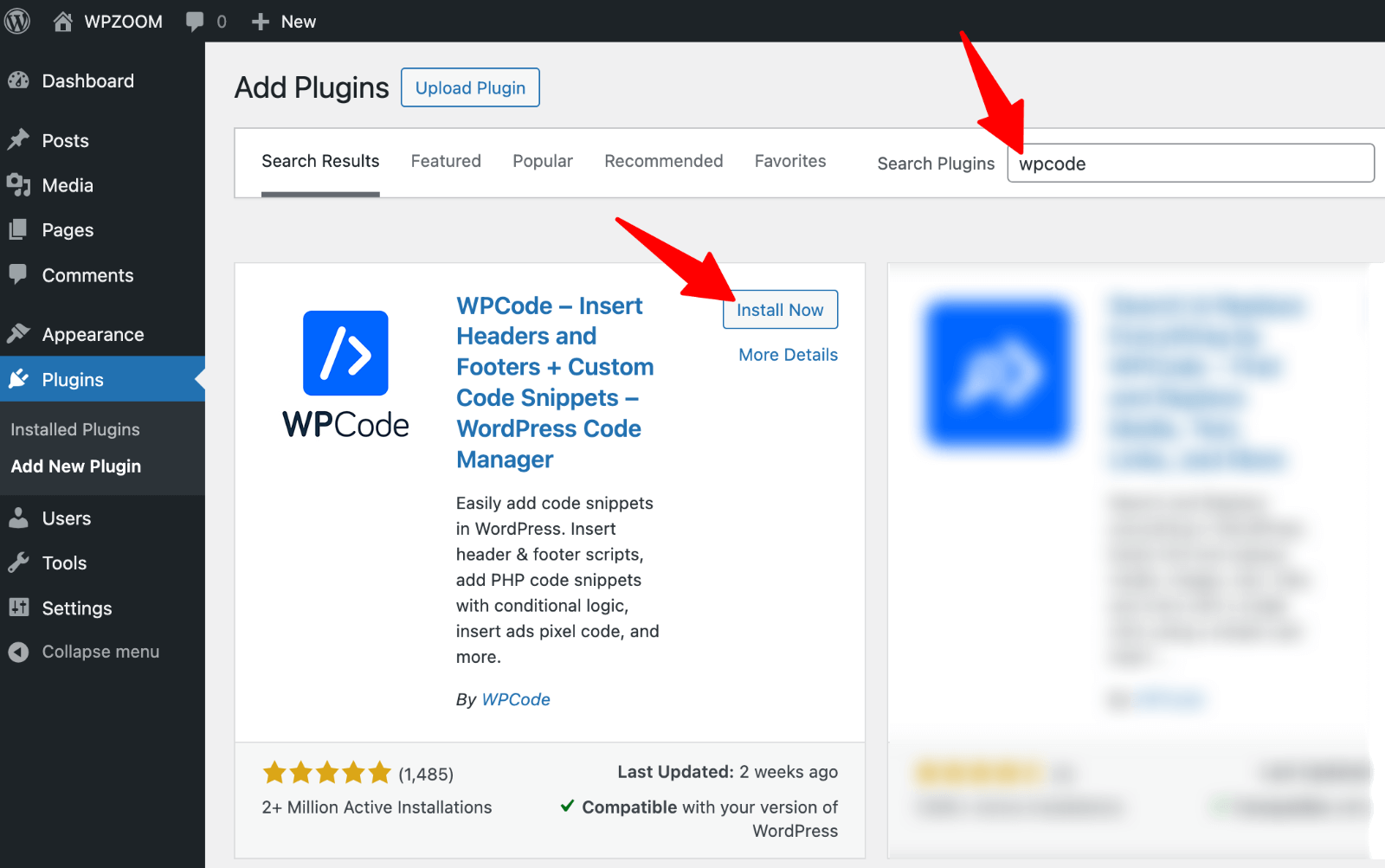
2. After activation, navigate to Code Snippets > Headers & Footers in your dashboard.
3. Select the place so as to add your JavaScript:
- Header: Scripts load earlier than web page content material (good for analytics or required libraries)
- Physique: Scripts load whereas the web page renders
- Footer: Scripts load after web page content material (finest for many performance).
4. Paste your JavaScript code into the suitable part, ensuring to incorporate correct <script> tags.
5. Click on “Save Modifications” to implement your JavaScript throughout your web site.
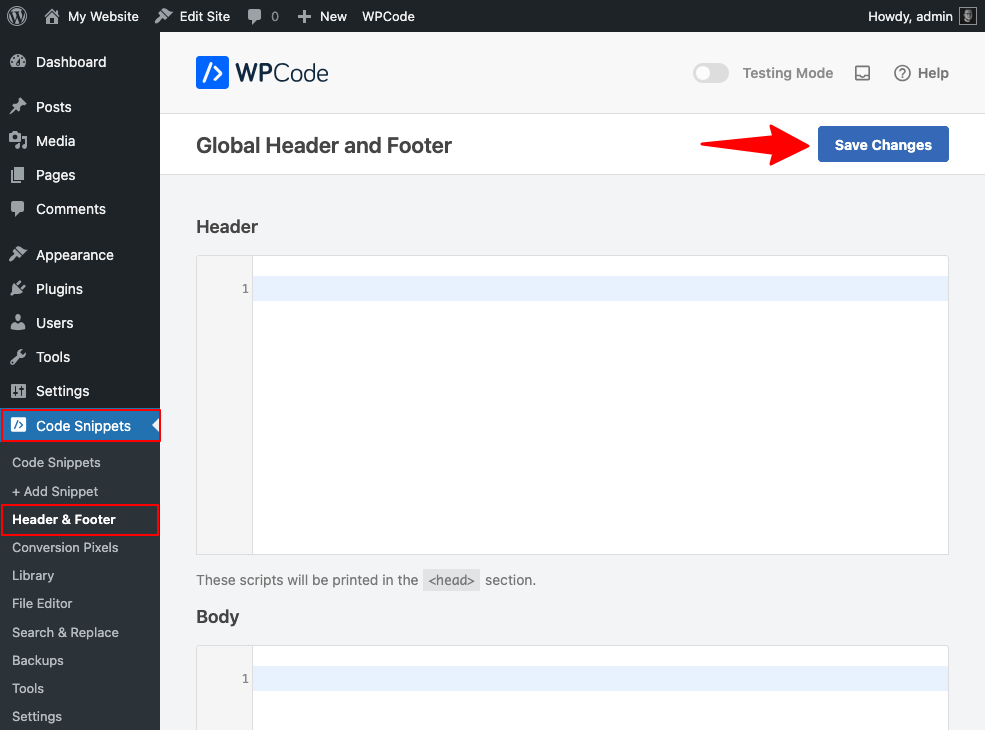
Including JavaScript to Particular Pages or Posts with WPCode
So as to add JavaScript to particular pages or posts, use the Snippets function as a substitute:
1. Go to Code Snippets > + Add Snippet.
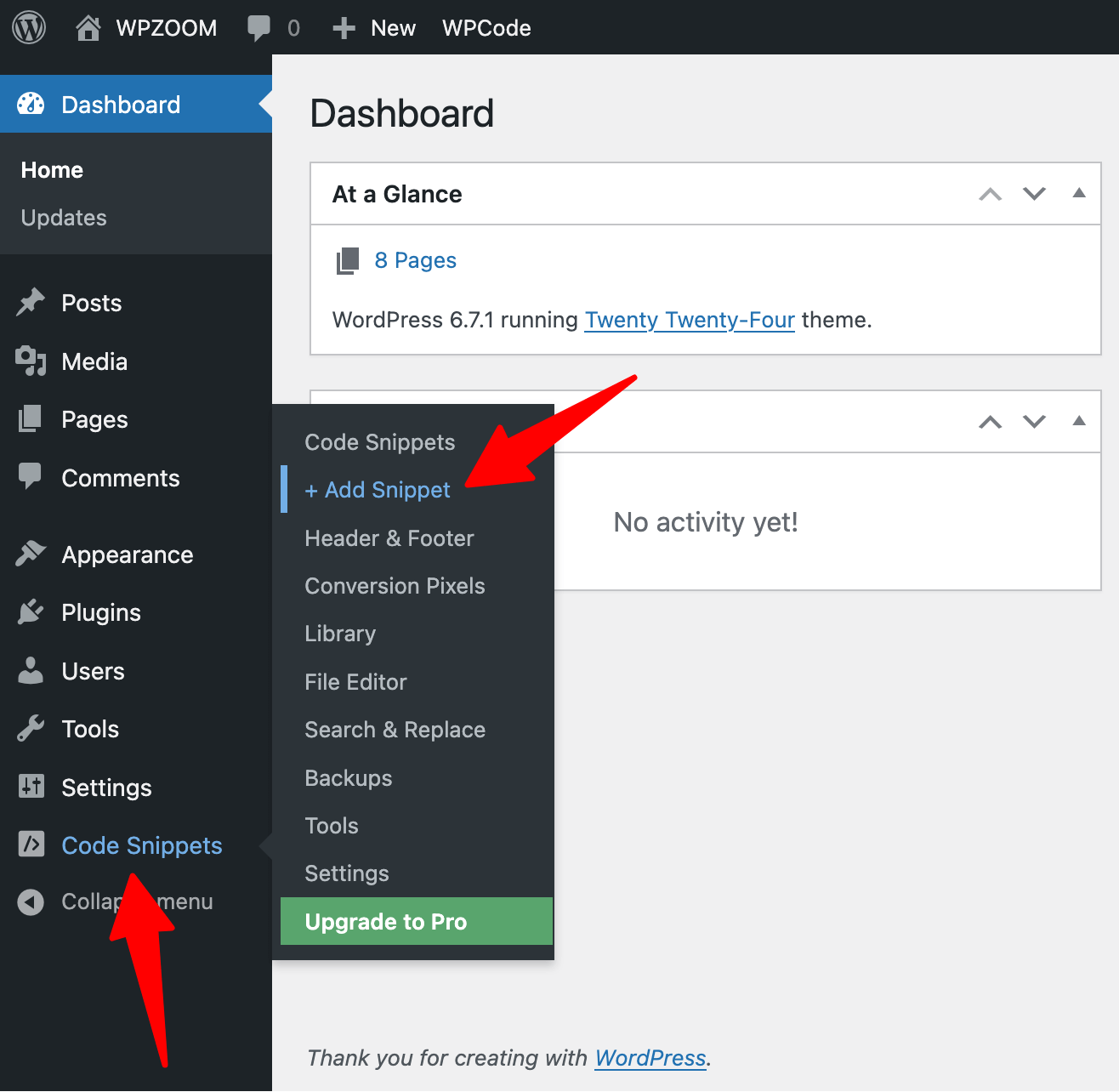
2. Select “Add Your Customized Code (New Snippet)” because the snippet sort.
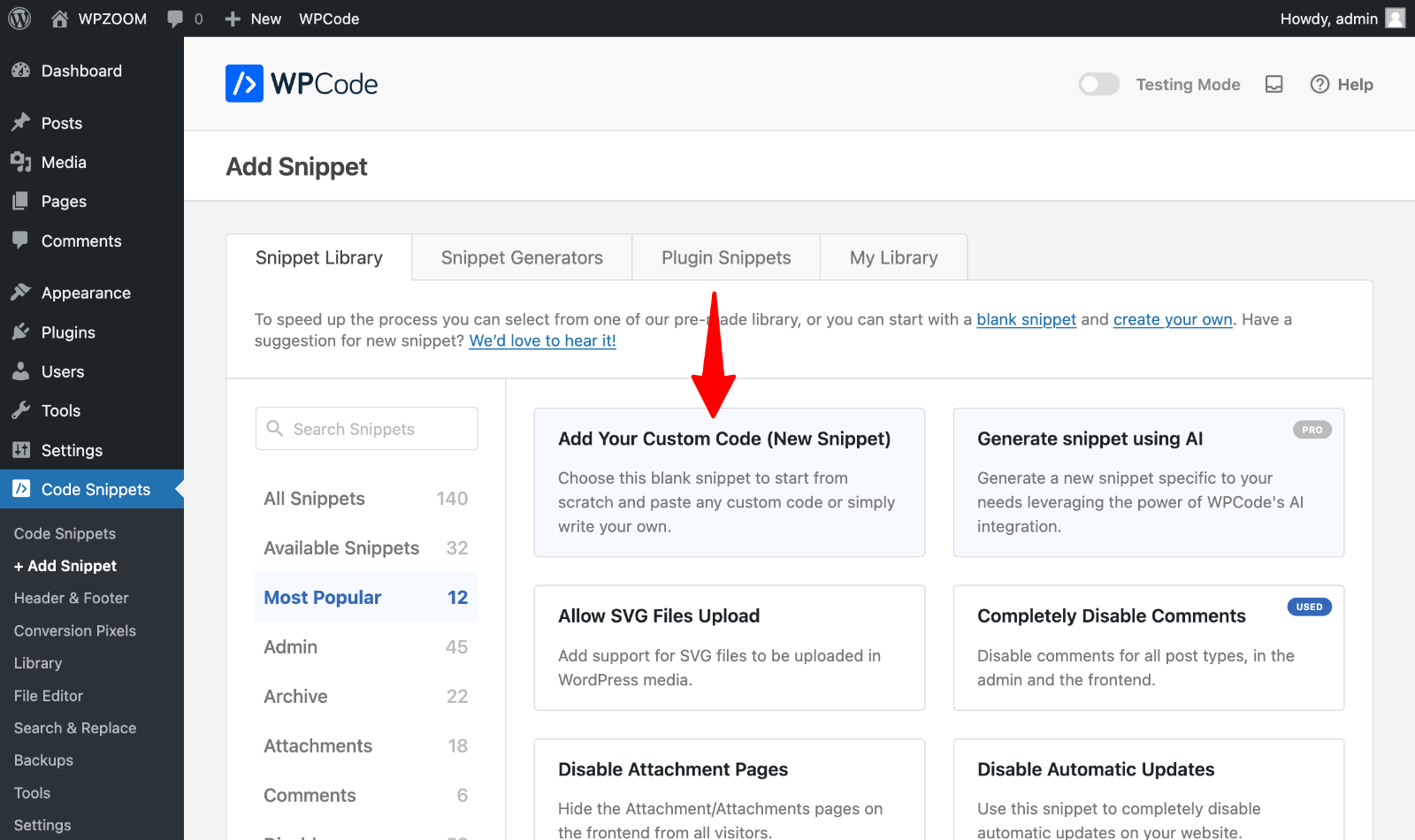
3. Choose “JavaScript Snippet” because the code sort in your snippet.
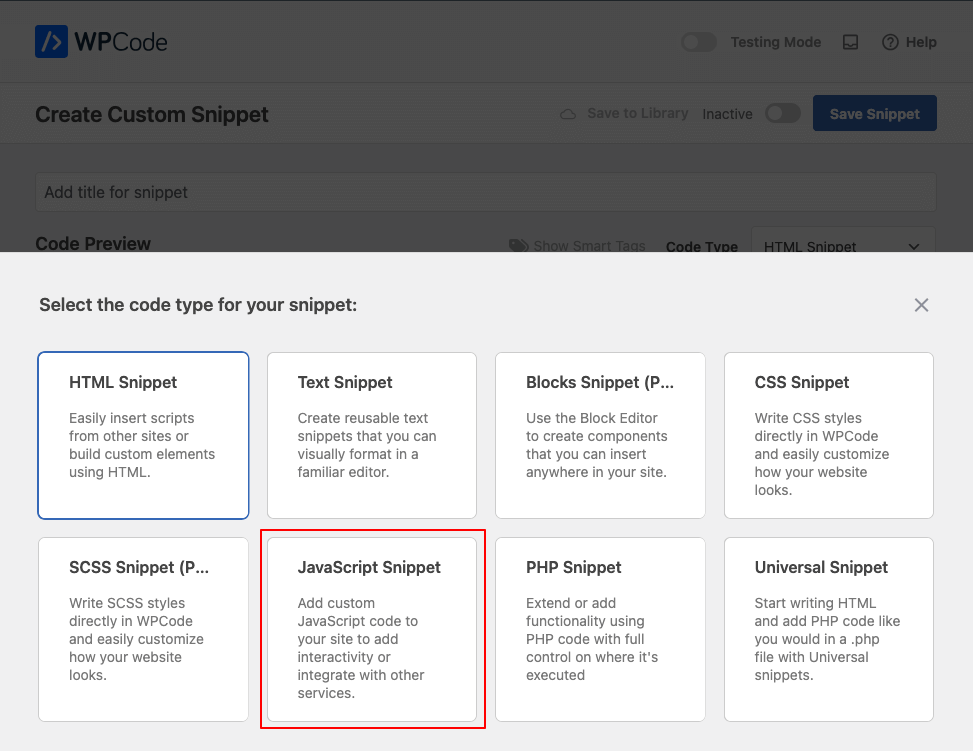
4. Identify your snippet and add your JavaScript.
5. Below “Location,” choose the place the snippet ought to seem.
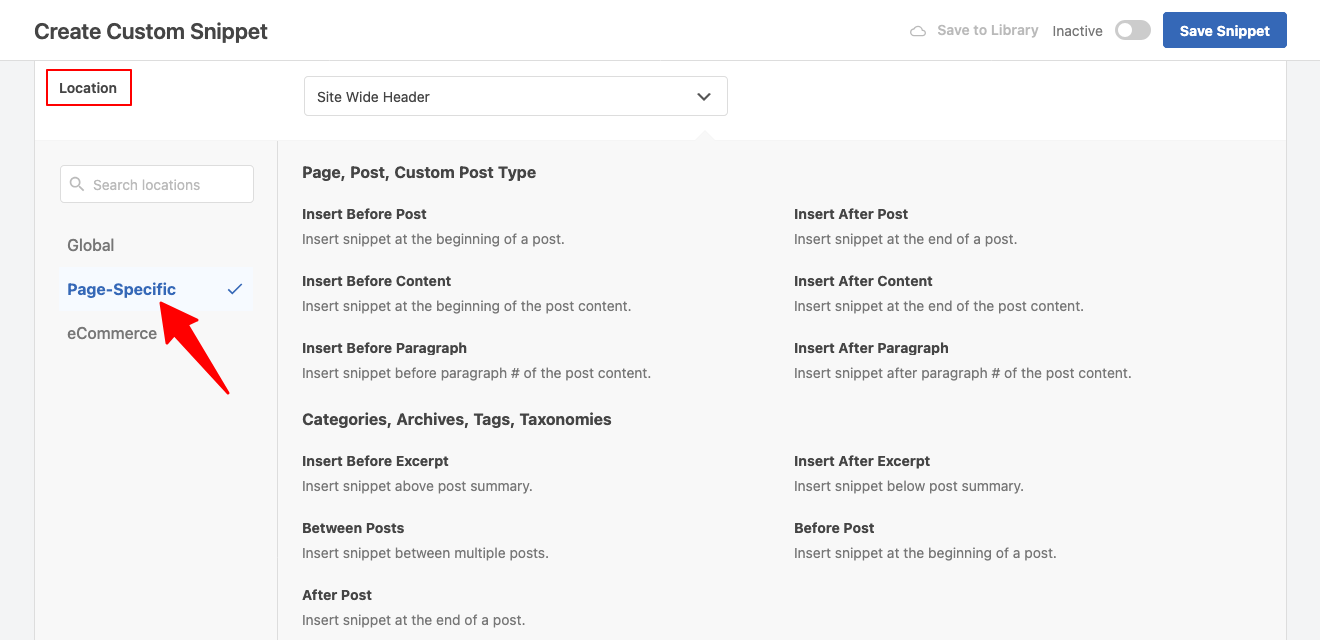
6. Scroll all the way down to “Good Conditional Logic“, flip no “Allow Logic” and click on “+ Add new group“.
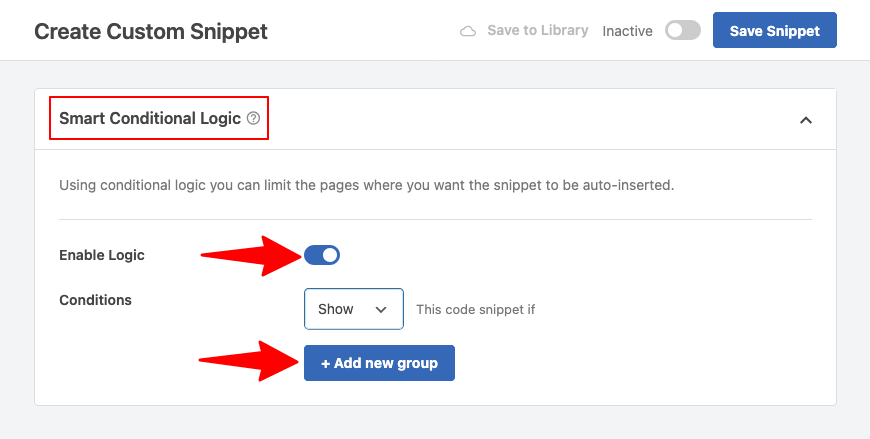
7. Sort on “Logged-in” drop-down menu, navigate to “The place (web page)” and select “Web page URL” or one other situation.
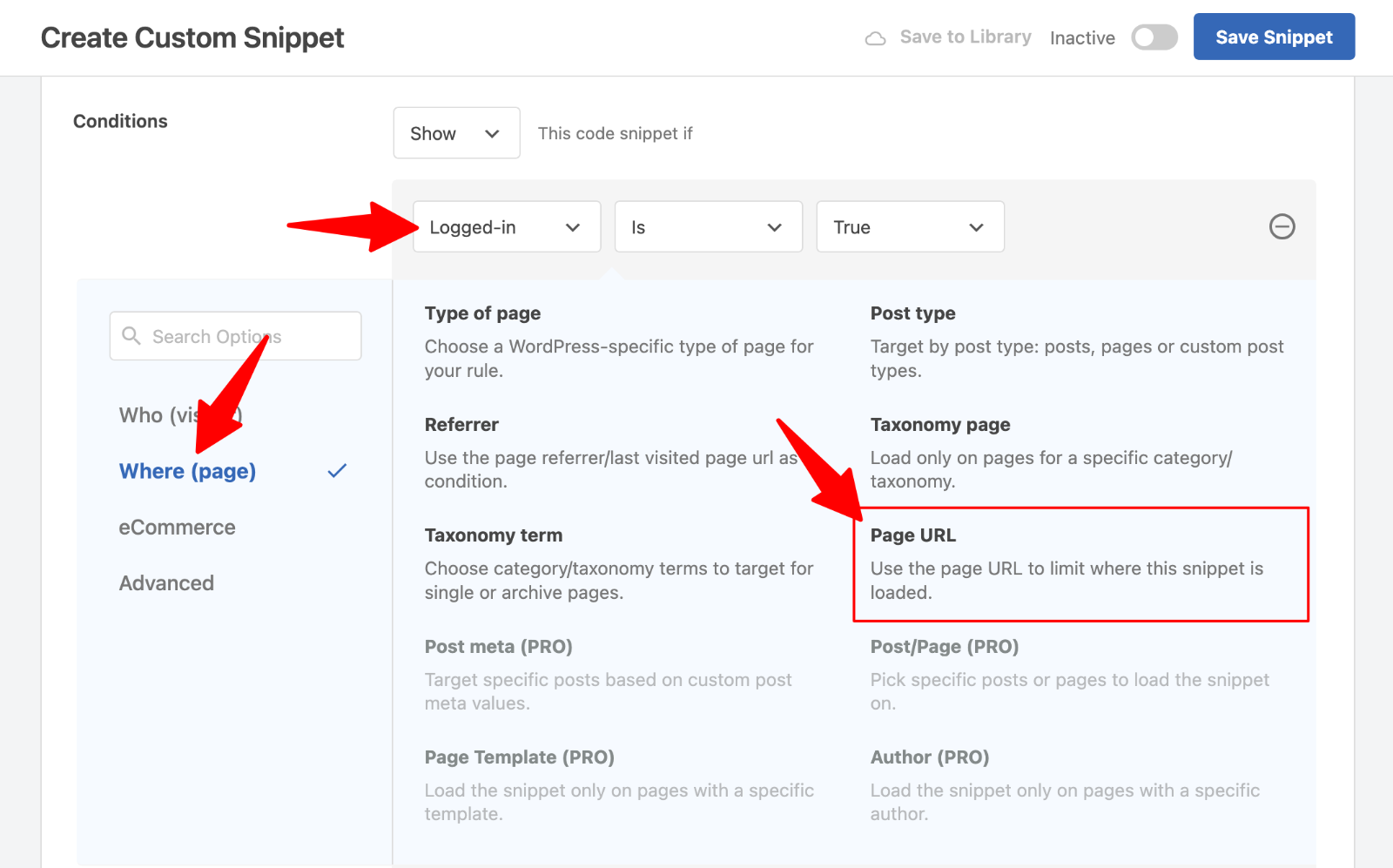
8. Select “Is” and enter the web page slug on the proper of the “Web page URL” drop-down menu.
Click on “Save Snippet” and activate the “Inactive/Energetic” toggle to activate the snippet.
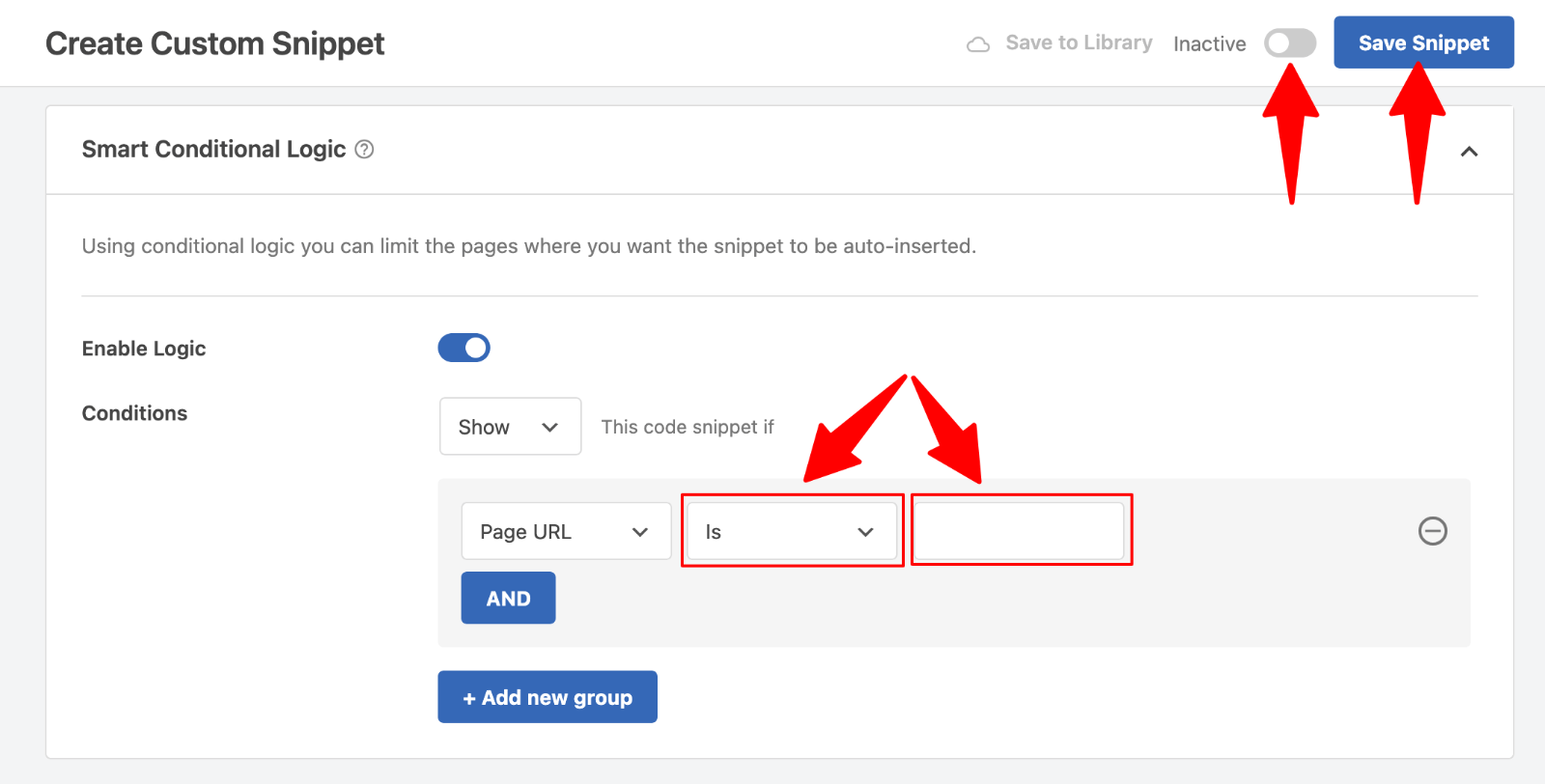
Methodology 2: Including JavaScript Manually to Theme Recordsdata
For builders or these comfy with code, manually including JavaScript to theme recordsdata gives better management and adaptability. This strategy helps you to place code precisely the place you want it inside your web site’s construction.
Think about this strategy when:
- You want exact placement of scripts
- Your JavaScript requires integration with particular theme components
- You’re developing a custom theme or plugin
- You like direct file entry over plugin interfaces
Understanding WordPress Theme Construction
WordPress themes include a number of key recordsdata related to JavaScript implementation:
- header.php: Controls content material within the <head> part and starting of the physique
- footer.php: Incorporates closing HTML tags and footer content material
- functions.php: Defines theme performance and handles correct script loading
These recordsdata serve distinct functions when including JavaScript to your web site.
To position JavaScript in your web site’s header, entry your theme’s header.php file utilizing the WPIDE plugin, WordPress Theme Editor or an FTP/File Supervisor.
1. For a greater code enhancing expertise, we’ll use the WPIDE plugin. Set up and lively it.
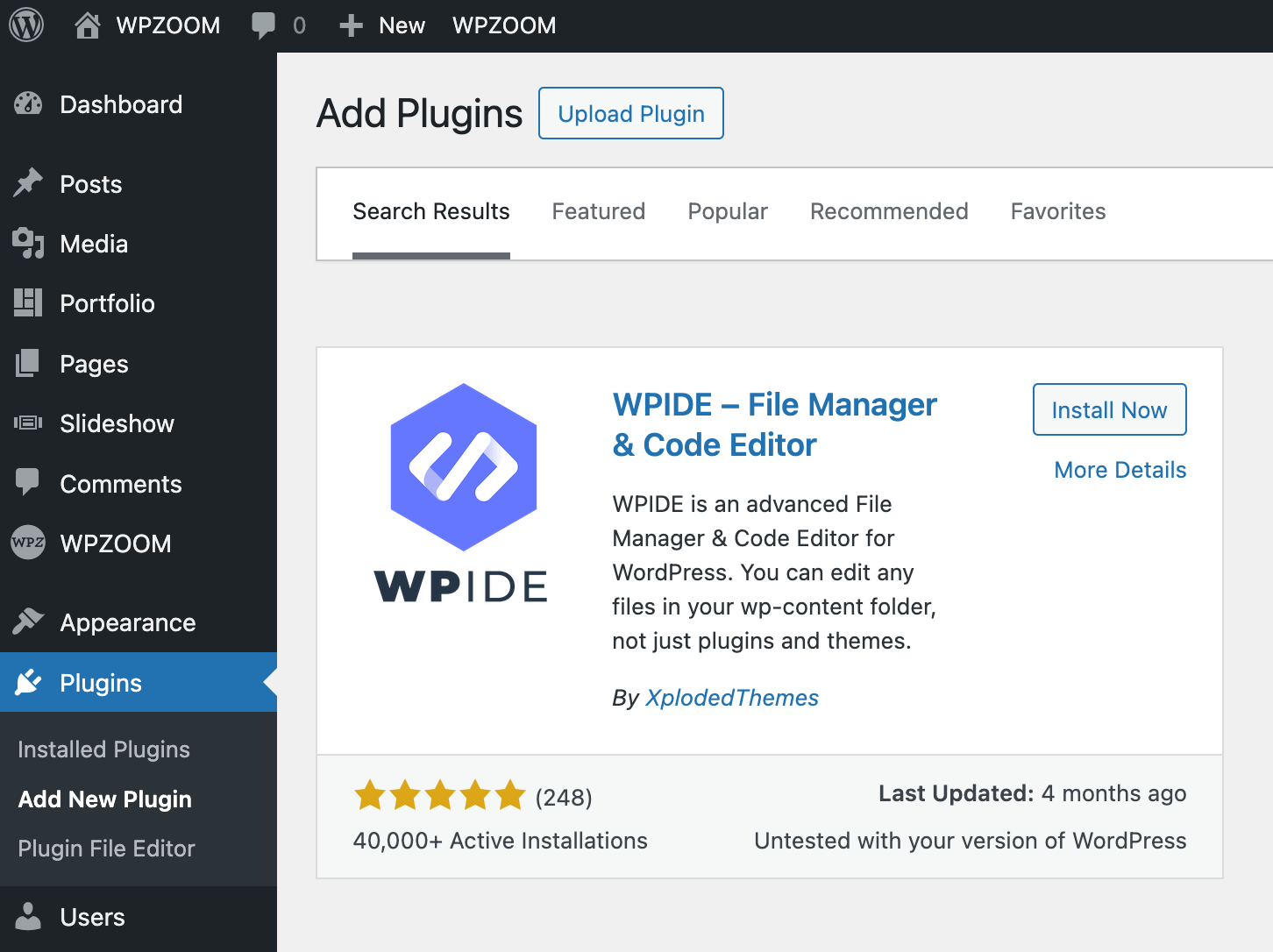
2. Go to WPIDE > File Supervisor, navigate to themes > your theme and discover and click on the header.php file to start out enhancing it.
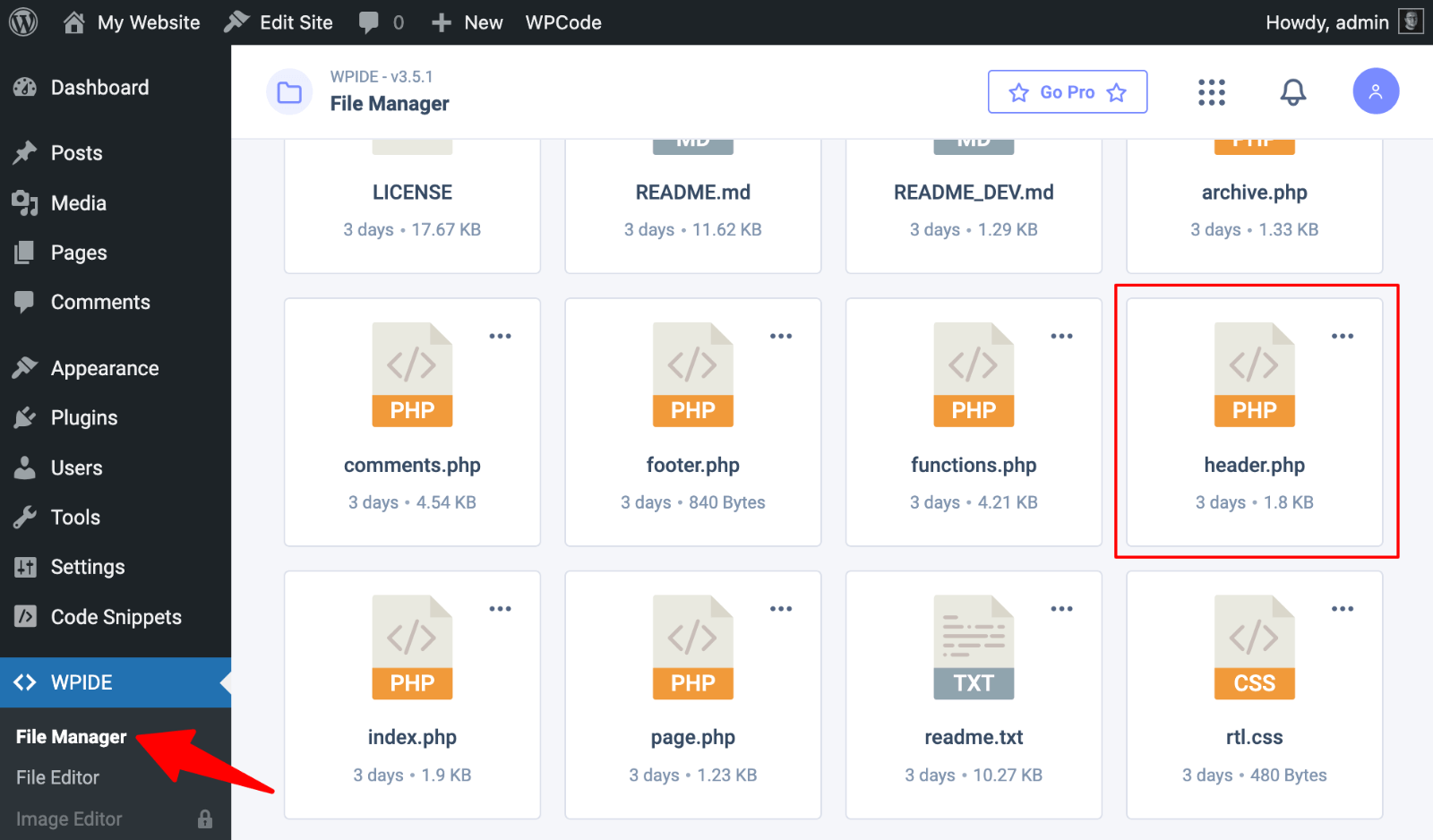
3. Find the closing </head> tag.
4. Insert your JavaScript code earlier than this tag utilizing correct <script> tags.
5. Save the file.
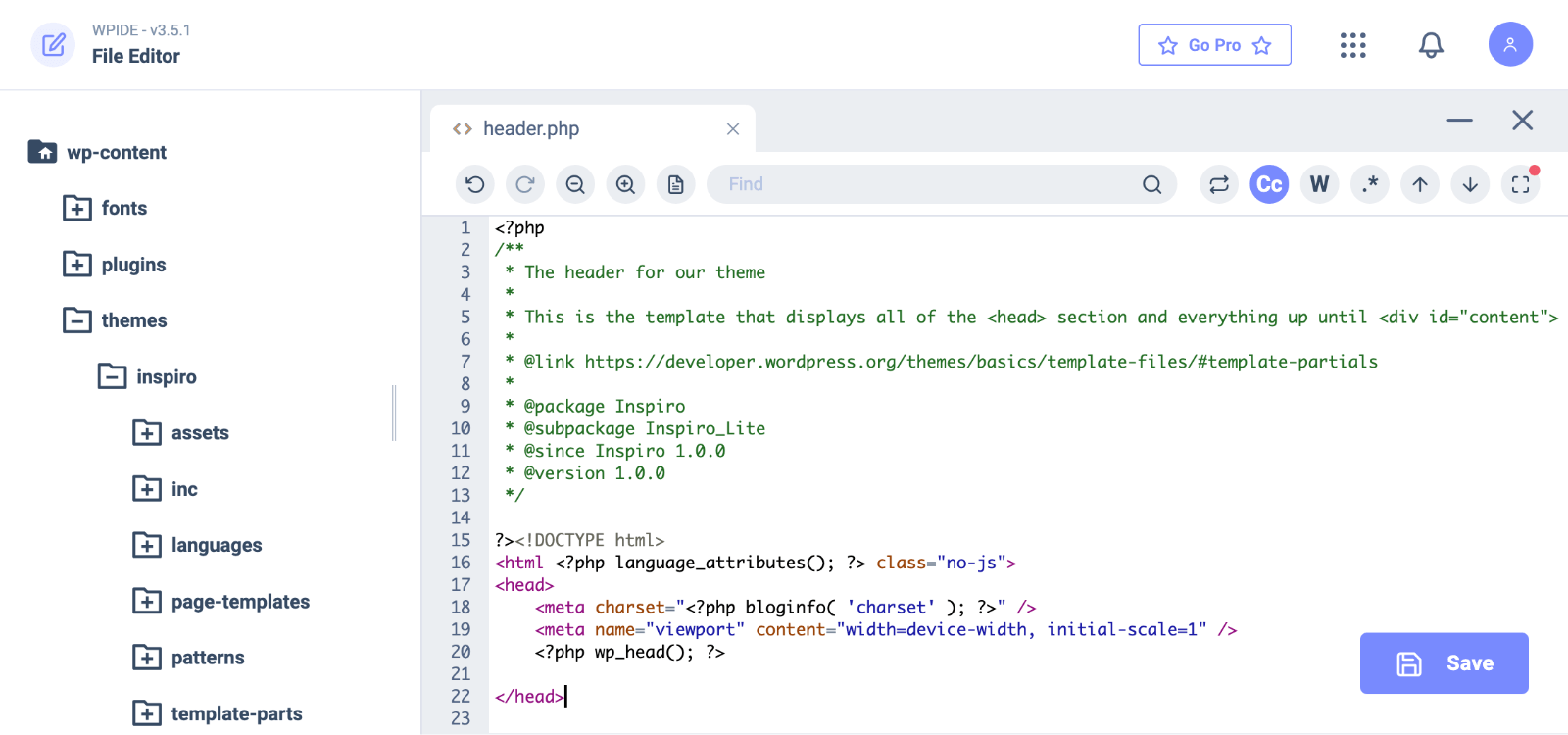
This placement hundreds scripts early throughout web page rendering, making them obtainable all through the web page. Nonetheless, scripts within the header could delay content material show whereas loading.
For higher efficiency, place non-essential scripts within the footer:
- Entry footer.php by WPIDE, the editor, or FTP.
- Discover the closing </physique> tag.
- Insert your JavaScript code earlier than this tag.
- Save adjustments.
Footer placement permits content material to load first, enhancing perceived web page pace whereas nonetheless permitting scripts for use for web page performance.
Making a Devoted JavaScript File
For a cleaner group, particularly with bigger scripts:
- Create a .js file containing your JavaScript code (with out <script> tags).
- Put it aside in your theme’s js folder (create one if wanted).
- Open features.php.
- Add code to correctly load your JavaScript file:
perform custom_theme_scripts() {
wp_enqueue_script('custom-script', get_template_directory_uri() . 'https://b8f4g5a7.supply.rocketcdn.me/js/custom-script.js', array(), '1.0.0', true);
}
add_action('wp_enqueue_scripts', 'custom_theme_scripts');This methodology retains your JavaScript separate from HTML/PHP recordsdata, making it simpler to take care of and replace.
Frequent Pitfalls to Keep away from
Be careful for these points when manually including JavaScript:
- Lacking closing tags or syntax errors that break your web site
- Loading scripts in incorrect order (dependencies should load first)
- Duplicate jQuery loading (WordPress contains jQuery)
- Forgetting to replace the file path in case your listing construction adjustments
Common testing helps catch these issues earlier than they have an effect on guests.
Methodology 3: Utilizing WordPress Hooks and Capabilities.php
WordPress hooks present a robust strategy to insert JavaScript at particular factors throughout web page technology with out straight enhancing theme template recordsdata. This methodology gives flexibility whereas sustaining compatibility with theme updates.
Understanding WordPress Hooks
Hooks are connection factors the place you possibly can connect {custom} code to WordPress processes. The 2 essential varieties apply to JavaScript integration:
- Motion hooks: Mean you can add code at particular factors throughout web page loading
- Filter hooks: Allow modification of content material earlier than it shows
For JavaScript, probably the most related motion hooks embody:
- wp_head: Fires inside the <head> part
- wp_footer: Executes simply earlier than the closing </physique> tag
- wp_enqueue_scripts: The right hook for registering and loading scripts
The Energy of wp_enqueue_script
WordPress offers wp_enqueue_script() because the really helpful perform for including JavaScript. This perform:
- Manages script dependencies
- Prevents duplicate loading
- Handles correct script ordering
- Provides choices for placement and loading conduct
Right here’s the way to implement it:
- Open your baby theme’s features.php file
- Add a {custom} perform that makes use of wp_enqueue_script
- Hook this perform to the wp_enqueue_scripts motion
Loading Exterior JavaScript Recordsdata
So as to add an exterior JavaScript file:
perform theme_custom_scripts() {
wp_enqueue_script('custom-js', get_template_directory_uri() . 'https://b8f4g5a7.supply.rocketcdn.me/js/{custom}.js', array('jquery'), '1.0', true);
}
add_action('wp_enqueue_scripts', 'theme_custom_scripts');Let’s break down this code:
- ‘custom-js’: A singular deal with to establish this script
- get_template_directory_uri() . ‘/js/{custom}.js’: Path to your JavaScript file
- array(‘jquery’): Dependencies (jQuery on this case)
- ‘1.0’: Model quantity for cache administration
- true: Load in footer (false hundreds in header)
Including Inline JavaScript
For smaller JavaScript snippets:
perform add_inline_js() {
?>
<script sort="textual content/javascript">
// Your JavaScript code right here
doc.addEventListener('DOMContentLoaded', perform() {
// Code that runs after web page hundreds
});
</script>
<?php
}
add_action('wp_footer', 'add_inline_js');This strategy embeds the JavaScript straight inside your web page’s HTML fairly than loading an exterior file.
Managing jQuery Dependencies
WordPress contains jQuery by default, however it runs in “noConflict” mode. When writing jQuery-dependent code:
perform jquery_custom_script() {
wp_enqueue_script('custom-jquery', get_template_directory_uri() . 'https://b8f4g5a7.supply.rocketcdn.me/js/custom-jquery.js', array('jquery'), '1.0', true);
}
add_action('wp_enqueue_scripts', 'jquery_custom_script');In your .js file, use:
jQuery(doc).prepared(perform($) {
// Use $ as regular right here
$('#component').addClass('lively');
});This ensures compatibility with different JavaScript libraries which may use the $ image.
Focusing on Particular Pages or Posts with JavaScript
Generally you want JavaScript to run solely on particular pages fairly than throughout your total web site. WordPress gives a number of strategies for this focused strategy.
Utilizing Conditional Logic
WordPress offers built-in conditional features to examine what sort of content material is being displayed:
- is_page(): Checks if viewing a particular web page
- is_single(): Checks if viewing a selected submit
- is_category(): Checks if viewing a class archive
- is_home(): Checks if viewing the weblog posts web page
- is_archive(): Checks if viewing any archive web page
Including JavaScript to Particular Pages
So as to add JavaScript to a selected web page, modify your features.php code:
perform page_specific_script() {
if(is_page('contact') || is_page(42)) {
wp_enqueue_script('contact-form-validation', get_template_directory_uri() . 'https://b8f4g5a7.supply.rocketcdn.me/js/validation.js', array('jquery'), '1.0', true);
}
}
add_action('wp_enqueue_scripts', 'page_specific_script');This code hundreds the script solely on pages with the slug ‘contact’ or the web page with ID 42.
Including JavaScript to Particular Posts
Equally, goal particular posts:
perform post_specific_script() {
if(is_single('product-review') || is_single(157)) {
wp_enqueue_script('review-features', get_template_directory_uri() . 'https://b8f4g5a7.supply.rocketcdn.me/js/overview.js', array(), '1.0', true);
}
}
add_action('wp_enqueue_scripts', 'post_specific_script');Focusing on Customized Publish Varieties or Classes
For extra advanced focusing on:
perform custom_content_script() {
if(is_singular('product') || is_category('featured')) {
wp_enqueue_script('product-script', get_template_directory_uri() . 'https://b8f4g5a7.supply.rocketcdn.me/js/product.js', array(), '1.0', true);
}
}
add_action('wp_enqueue_scripts', 'custom_content_script');Utilizing Shortcodes for JavaScript
Shortcodes supply one other strategy to insert JavaScript into particular content material:
perform js_shortcode_function() {
$output="<script sort="textual content/javascript">";
$output .= 'alert("This message seems solely the place the shortcode is used!");';
$output .= '</script>';
return $output;
}
add_shortcode('js_alert', 'js_shortcode_function');With this registered, insert [js_alert] wherever in submit or web page content material to set off that particular JavaScript.
This focused strategy prevents pointless script loading, enhancing web site efficiency whereas sustaining wanted performance the place required.
Optimizing JavaScript Efficiency in WordPress
JavaScript improves your web site’s performance, however can decelerate web page loading if not appropriately dealt with. Optimizing the way you implement JavaScript maintains efficiency whereas retaining all its advantages.
Comply with these strategies to maximise pace and effectivity:
Minification and Compression
Minifying JavaScript removes pointless characters like whitespace, feedback, and line breaks with out altering performance. This reduces file dimension and accelerates loading occasions.
A number of instruments can assist with minification:
Defer and Async Loading
The best way scripts load impacts how shortly customers see your content material:
- Defer: Masses scripts after HTML parsing completes however earlier than DOMContentLoaded fires
- Async: Masses scripts alongside HTML parsing, executing as quickly as downloaded
Add these attributes when enqueuing scripts:
perform optimized_script_loading() {
wp_enqueue_script('deferred-script', get_template_directory_uri() . 'https://b8f4g5a7.supply.rocketcdn.me/js/script.js', array(), '1.0', true);
wp_script_add_data('deferred-script', 'defer', true);
}
add_action('wp_enqueue_scripts', 'optimized_script_loading');Strategic Script Placement
The place you place scripts issues:
- Header scripts block content material rendering till they load
- Footer scripts permit content material to show first
- Solely place scripts within the header when completely essential
Combining A number of Scripts
Decreasing HTTP requests improves loading occasions. When doable, mix a number of JavaScript recordsdata right into a single file, particularly for associated performance.
Dealing with Third-Celebration Scripts
Exterior scripts from analytics, promoting, or social media platforms can considerably influence efficiency:
- Load non-essential third-party scripts within the footer
- Think about lazy loading choices that delay loading till wanted
- Use tag administration methods to manage third-party code
- Commonly audit third-party scripts to take away unused ones
Measuring JavaScript Efficiency
Observe how JavaScript impacts your web site:
- Use browser developer instruments to watch loading occasions
- Test PageSpeed Insights for particular suggestions
- Monitor Core Web Vitals metrics like First Enter Delay
- Check your web site repeatedly after including new scripts
These optimization strategies assist stability enhanced performance with the fast-loading expertise customers count on.
Debugging JavaScript in WordPress
Even fastidiously carried out JavaScript can generally behave unexpectedly. Efficient debugging helps establish and repair points shortly.
Frequent JavaScript Errors in WordPress
Look ahead to these frequent issues:
- Syntax errors from lacking brackets, semicolons, or quotes
- Conflicts between a number of JavaScript libraries
- jQuery dependency points when $ is undefined
- DOM manipulation makes an attempt earlier than components load
- Cross-browser compatibility issues
Utilizing Browser Developer Instruments
Your browser’s developer instruments present highly effective debugging capabilities:
- Open developer instruments with F12 or right-click and choose “Examine“
- Navigate to the Console tab to view JavaScript errors
- Test the Community tab to verify scripts are loading
- Use breakpoints within the Sources tab to pause execution and examine variables
These instruments present the place and why errors happen, making fixes a lot simpler.
Enabling WordPress Debug Mode
WordPress contains built-in debugging options. Add these strains to your wp-config.php file:
outline('WP_DEBUG', true);
outline('WP_DEBUG_LOG', true);
outline('SCRIPT_DEBUG', true);This configuration reveals errors which may in any other case stay hidden and hundreds unminified variations of core scripts for higher debugging.
Troubleshooting Strategies
When dealing with JavaScript points:
- Quickly disable different plugins to examine for conflicts
- Check with a default WordPress theme to isolate theme-specific issues
- Add console.log() statements to trace code execution
- Confirm script dependencies load within the right order
- Use attempt/catch blocks to deal with potential errors gracefully
Take Your WordPress Web site to the Subsequent Degree with WPZOOM
Prepared to rework your WordPress web site with gorgeous design and seamless JavaScript integration?
WPZOOM themes present the proper basis in your artistic imaginative and prescient. Our professionally crafted themes include clear code structure, making JavaScript implementation simple and dependable. You’ll admire our detailed documentation and devoted assist crew, prepared to help together with your customization wants.
Whether or not you’re constructing a portfolio, enterprise web site, or weblog, WPZOOM themes supply the flexibleness and efficiency you want.
Brought to you by FREELANCE
WEB DESIGNER KUALA LUMPUR







